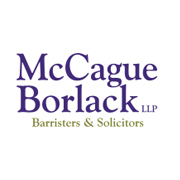by Matthew Dugas and Sandra White
Diminished value claims for property damage to automobiles are statutorily barred by section 263 of the Insurance Act, R.S.O. 1990, c. I.8.
At least that is what section 263 of the Insurance Act appeared to do. However, Ontario insurers have long been plagued by persistent claims, especially in the Small Claims Court. All of the actual reported decisions dismissed these claims, but the decisions tended to be fact-specific. Without any clear decisions by a higher Court, new claims would arise with some new variation of the diminished value argument.
The theory of diminished value (also referred to as accelerated depreciation) is that there is a difference in market value between a vehicle that had been in an accident (even if it was fully repaired without issue), as opposed to the same type of vehicle but with a clean accident history.
The degree to which this perceived diminished value actually exists and can be properly quantified may remain an interesting point for economists, but for lawyers and Ontario automobile insurers, this is now a moot point – any such claims are indeed statutorily barred by section 263 of the Insurance Act, an interpretation which for the first time is confirmed in a Divisional Court appeal.
Justice McCarthy of the Divisional Court categorically rejected a claim for diminished value to an Ontario-insured automobile as statutorily barred in his decision Gordon-Taitt v. Travelers Canada Corp. and Jennifer Polak, 2022 ONSC 712. Leave to appeal the matter to the Court of Appeal was applied for but denied.
The Appellant/Plaintiff appealed a small claims decision by Deputy Judge Kowalishin dismissing her diminished value claim. That trial decision was appealed to the Divisional Court and is the subject of the decision by Justice McCarthy.
Does s.263 of the Insurance Act, R.S.O. 1990, c. I.8 prohibit claims for diminished value?
The starting point for this issue is section 263 of the Insurance Act. Section 263 is a statutory bar for claims against another driver for property damage. The argument of the defendants, accepted here by the Divisional Court, is that this statutory bar against claims for property damage includes claims for diminished value. Section s.263 states:
s. 263(1) This section applies if,
(a) an automobile or its contents, or both suffers damage arising directly or indirectly from the use or operation in Ontario of one or more automobiles;
(2) If this section applies, an insured is entitled to recover for the damages to the insured's automobile and its contents and for the loss of use from the insured's insurer under the coverage described in subsection 239(1) as though the insured were a third party ...
Restrictions on other recovery
(5) If this section applies,
(a) an insured has no right of action against any person involved in the incident other than the insured's insurer for damages to the insured's automobile or its contents or for loss of use.
The Appellant/Plaintiff asserted that diminished value was distinct and separate from "damages to the automobile...
S.263 of the Insurance Act prevents Ontarians from suing anyone other than their insurance company with respect to property damage. It is a statutory bar to a tort action against another driver involved in the collision with some degree of fault for property damage, so long as the conditions set out in the section apply (for instance, one condition is that both vehicles are insured in Ontario).
The Appellant/Plaintiff asserted that diminished value was distinct and separate from "damages to the automobile," making statutory construction arguments that this statutory bar ought to be limited to physical damage only.
In his Divisional Court decision, Justice McCarthy addressed the "creative and interesting" arguments of the Appellant/Plaintiff, listing/summarizing them in paragraph 13. However, he ultimately agreed with the Respondent/Defendant that:
"A plain reading of the relevant sections of the Act makes it clear that the legislature intended to eliminate actions against tortfeasors for auto property damage."
Going further on this point, Justice McCarthy added:
"'Damages to the insured's automobile' is a broad enough term to include any diminution in value to a vehicle which might result from a collision. In my view, it would offend both the plainly expressed wording in s. 263(5) as well as the overall intention of the OMPP to permit actions for diminished value to be advanced."
Legislative Intent of s.263 of the Insurance Act, R.S.O. 1990, c. I.8
The statutory interpretation issues in this matter included an analysis of the legislative intent of section 263 of the Insurance Act. The provision came into force as part of the Ontario Motorist Protection Plan (OMPP) in 1990, which instituted a first-party claim system for property damage claims arising from motor vehicle accidents. The effect of the entirety of section 263 is that while a statutory bar removes any right to claim against an at-fault driver in tort, Ontario insureds would have the ability to claim property damage against their own insurer in a new and different first-party claim system (specifically, the "Direct Compensation – Property Damage" coverage in section 6 of the standard Ontario policy, the O.A.P. 1).
...insureds can no longer sue the tortfeasor driver whose negligence has caused the damage to their cars... |
The legislative intent of section 263 had been discussed before in previous decisions. Most notably, the Ontario Court of Appeal's 2007 decision in Clarendon National Insurance v. Candow, 2007 ONCA 680, [2007] O.J. No. 3797, discussed that section 263 "replaced the tort system," meant that "insureds can no longer sue the tortfeasor driver whose negligence has caused the damage to their cars," and that "the statutory regime eliminates the transaction costs that were inherent in the [previous tort] system."
Despite these comments by the Ontario Court of Appeal in Clarendon, the Appellant/Plaintiff argued that since Clarendon did not involve a claim for diminished value (the facts in that case related to subrogated claims of a non-Ontario insurer) and could therefore be distinguished. However, Justice McCarthy found that the principle discussed in Clarendon was "abundantly clear" and that "the former right to sue a tortfeasor driver for damages caused to one's motor vehicle has been statutorily removed from Ontario's common law by s. 264 of the Insurance Act".
Takeaways
Although section 263 of the Insurance Act certainly appeared on its face to preclude any tort claims for diminished value, claims for diminished value would nevertheless arise for insurers periodically. Due to the modest value of many of these claims, they were mostly within the Small Claims Court. Although Small Claims Court decisions had been generally consistent in dismissing any such claims, insurers lacked a definitive decision confirming these claims were statutorily barred.
In Justice McCarthy's Divisional Court decision Gordon-Taitt v. Travelers Canada Corp. and Jennifer Polak, 2022 ONSC 712, there is finally a definitive decision which clearly finds section 263 of the Insurance Act precludes tort claims for diminished value to vehicles as a result of an accident.
It is noted that there have been related cases where a Plaintiff/Insured would allege that, if they were indeed statutorily barred from diminished value claims against a tortfeasor, they should be able to recover against their own insurer. Indeed, the Plaintiff/Appellant in this matter included their own insurer in the original Small Claims Court action but only elected to pursue its appeal against the tortfeasor defendant. In this regard, it is worth noting that there is also a Divisional Court decision confirming that an insured has no right to recover diminished value from its own insurer under the first party claims process (Zheng v. Certas Home and Auto Insurance Co, 2019 ONSC 2753 (CanLII)).



